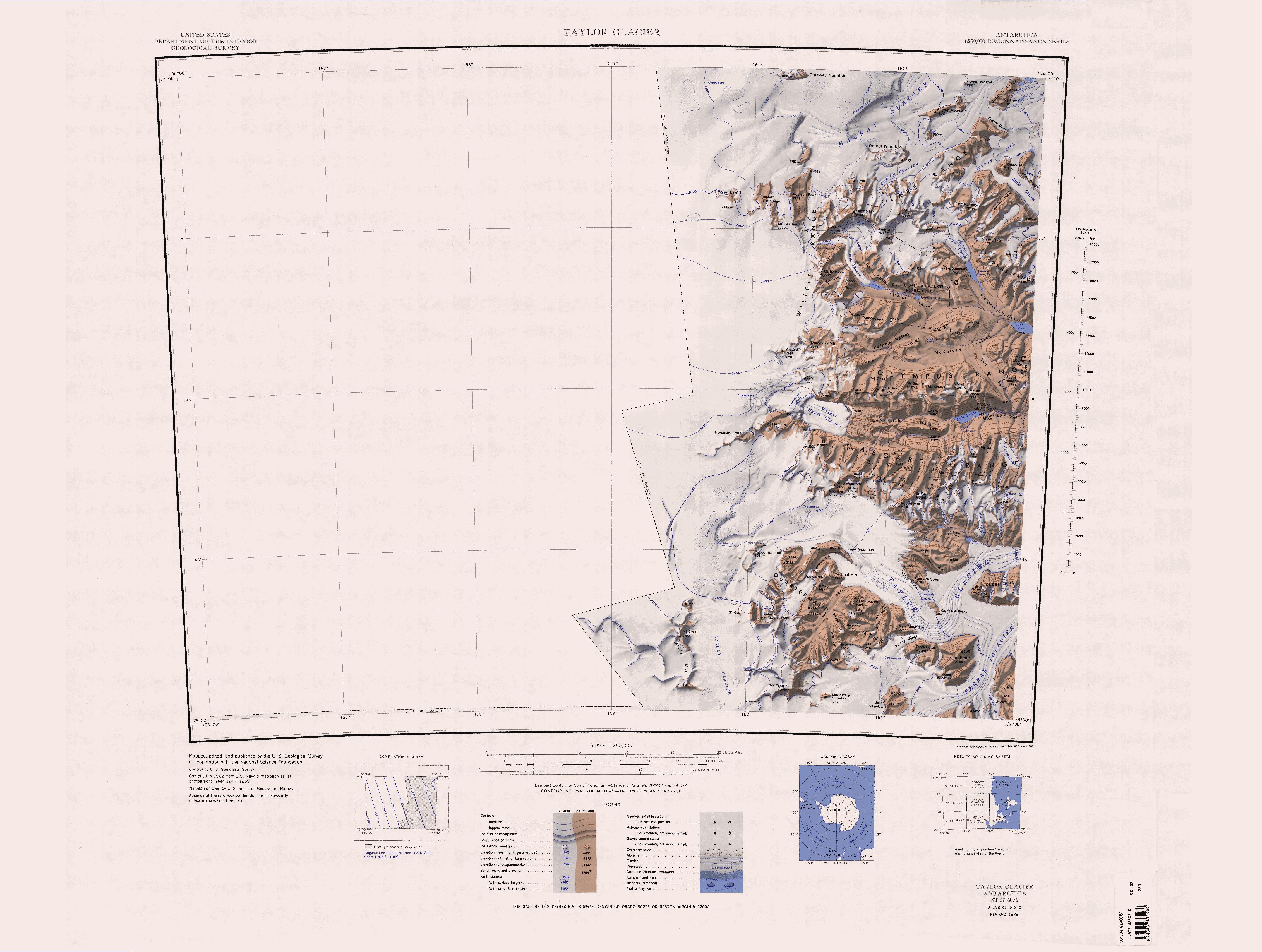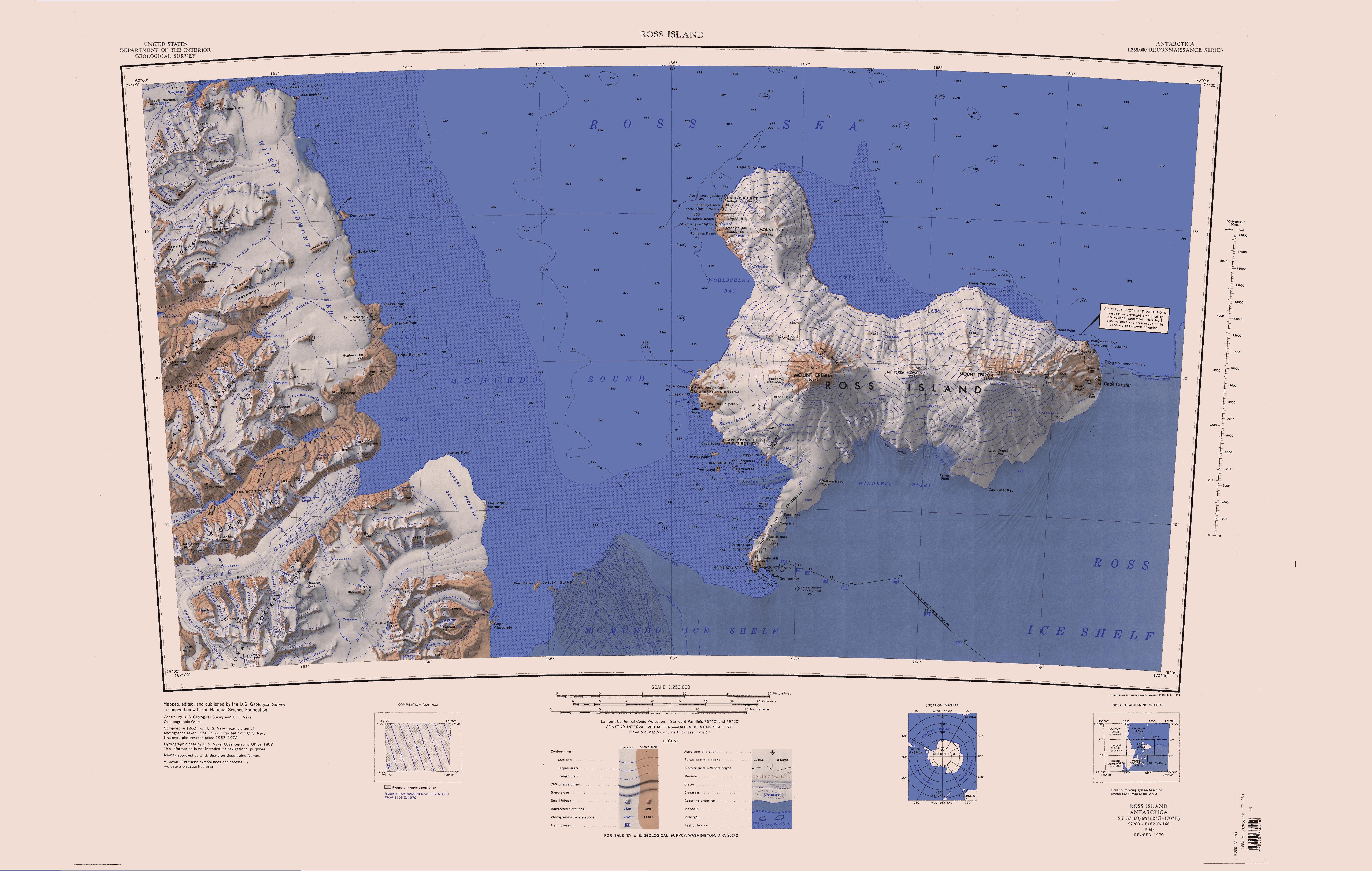Horowitz Ridge on:
[Wikipedia]
[Google]
[Amazon]
The Horowitz Ridge () is a rock ridge between David Valley and King Valley in the

 The Horowitz Ridge lies between King Valley to the northwest and David Valley to the east.
The head of the Conrow Glacier, which flows north towards Wright Valley is to the north of the ridge.
The head of the Rhone Glacier, which flows southeast towards
The Horowitz Ridge lies between King Valley to the northwest and David Valley to the east.
The head of the Conrow Glacier, which flows north towards Wright Valley is to the north of the ridge.
The head of the Rhone Glacier, which flows southeast towards
Asgard Range
The Asgard Range () is a mountain range in Victoria Land, Antarctica.
It divides Wright Valley from Taylor Glacier and Taylor Valley.
It is south of the Olympus Range and north of the Quartermain Mountains and the Kukri Hills.
Name
The Asga ...
of Victoria Land
Victoria Land is a region in eastern Antarctica which fronts the western side of the Ross Sea and the Ross Ice Shelf, extending southward from about 70°30'S to 78th parallel south, 78°00'S, and westward from the Ross Sea to the edge of the Ant ...
, Antarctica.
Naming
The Horowitz Ridge was named for ProfessorNorman Horowitz
Norman Harold Horowitz (March 19, 1915 – June 1, 2005) was an American geneticist at Caltech who achieved national fame as the scientist who devised experiments to determine whether life might exist on Mars. His experiments were carried out by ...
of the California Institute of Technology
The California Institute of Technology (branded as Caltech) is a private research university in Pasadena, California, United States. The university is responsible for many modern scientific advancements and is among a small group of institutes ...
, whose interest in the analogy of Antarctica
Antarctica () is Earth's southernmost and least-populated continent. Situated almost entirely south of the Antarctic Circle and surrounded by the Southern Ocean (also known as the Antarctic Ocean), it contains the geographic South Pole. ...
to Mars
Mars is the fourth planet from the Sun. It is also known as the "Red Planet", because of its orange-red appearance. Mars is a desert-like rocky planet with a tenuous carbon dioxide () atmosphere. At the average surface level the atmosph ...
led him to suggest the value of Victoria Land Dry Valley
A dry valley may develop on many kinds of permeable rock, such as limestone, chalk, sand stone and sandy terrains that do not regularly sustain surface water flow. Such valleys do not hold surface water because it sinks into the permeable bed ...
studies in regard to Martian life detection.
The studies were undertaken in 1966–68 by a United States Antarctic Research Program
The United States Antarctic Program (or USAP; formerly known as the United States Antarctic Research Program or USARP and the United States Antarctic Service or USAS) is an organization of the United States government which has a presence in the ...
biological party led by Roy E. Cameron, who suggested the naming.
Location

 The Horowitz Ridge lies between King Valley to the northwest and David Valley to the east.
The head of the Conrow Glacier, which flows north towards Wright Valley is to the north of the ridge.
The head of the Rhone Glacier, which flows southeast towards
The Horowitz Ridge lies between King Valley to the northwest and David Valley to the east.
The head of the Conrow Glacier, which flows north towards Wright Valley is to the north of the ridge.
The head of the Rhone Glacier, which flows southeast towards Taylor Valley
Taylor Valley is an ice-free valley about long, once occupied by the receding Taylor Glacier.
It lies north of the Kukri Hills between the Taylor Glacier and New Harbour in Victoria Land, Antarctica.
Taylor Valley is the southernmost of the ...
, is to the south.
Features
Features near to the ridge include, from south to north:Mount Darby
. A mountain rising to on the divide between Rhone Glacier andMatterhorn Glacier
The Matterhorn Glacier (German: ''Matterhorngletscher'') is a glacier of the Pennine Alps, located at the base of the north face of the Matterhorn (4478m above the sea), south of Zermatt. It has a maximum width of approximately 2.5 km and r ...
.
The mountain stands northwest of Mount J. J. Thomson.
Named by the New Zealand Geographic Board
The New Zealand Geographic Board Ngā Pou Taunaha o Aotearoa (NZGB) is the authority over geographical and hydrographic names within New Zealand and its territorial waters. This includes the naming of small urban settlements, localities, mounta ...
(NZGB) (1998) after Marie Darby, marine biologist of the Canterbury Museum, Christchurch.}
Her January 1968 voyage to McMurdo Sound in the Magga Dan marks the first visit of a New Zealand woman scientist to Antarctica.
Norris Glacier
. A glacier flowing eastward between Kennedy Glacier and Mount Darby into the upper part of Matterhorn Glacier. Named by the NZGB (1998) after Baden Norris, Honorary Curator of the Antarctic collection, Canterbury Museum; historian who worked in Antarctica as a conservator of historic huts.Kottmeier Mesa
. A prominent high mesa, northwest of Mount J. J. Thomson. Almost wholly ice covered, the mesa is long, averages wide, and rises above the converging heads of David Valley, Bartley Glacier, Matterhorn Glacier, and the north flank of Rhone Glacier, all receiving ice that drains from the feature. Named by the United StatesAdvisory Committee on Antarctic Names
The Advisory Committee on Antarctic Names (ACAN or US-ACAN) is an advisory committee of the United States Board on Geographic Names responsible for recommending commemorative names for features in Antarctica.
History
The committee was established ...
(US-ACAN) (1997) after Steven T. Kottmeier, who as a United States Antarctic Project (United States ArmyP) researcher, 1981-87, investigated sea ice microbial communities in the fast ice of McMurdo Sound, as well as krill associated with ice edge zones in Bellingshausen, Scotia and Weddell Seas. Served as the Manager, Laboratory Facilities, McMurdo Station for ITT Antarctic Services, 1988-90; Manager, Laboratory Science, 1990-96 and Chief Scientist from 1997 for Antarctic Support Associates (ASA).
Bromley Peak
. A peak, high, marking the summit of Horowitz Ridge. The peak stands west ofVogler Peak
Roa Ridge () is a bow-shaped ridge, long in the Asgard Range of Victoria Land, Antarctica.
For much of its extent, it separates Matterhorn Glacier and Lacroix Glacier.
Named by New Zealand Geographic Board (NZGB) in 1998.
''Roa'' is a Maori ...
.
Named by the NZGB (1998) after A. M. (Tony) Bromley, a New Zealand Polar Medalist involved in Antarctic meteorological research for 30 years; member of the 1974 Vanda Station winter party.
Fenrir Valley
. A small, mainly ice-free valley between the upper reaches of the Heimdall Glacier and Rhone Glacier. The name, applied byNew Zealand Antarctic Place-Names Committee New Zealand Antarctic Place-Names Committee (NZ-APC) is an adjudicating committee established to authorize the naming of features in the Ross Dependency on the Antarctic continent. It is composed of the members of the New Zealand Geographic Board pl ...
(NZ-APC) and the US-ACAN in consultation, is one in a group in the range derived from Norse mythology, wherein Fenrir
Fenrir (Old Norse 'fen-dweller')Orchard (1997:42). or Fenrisúlfr (Old Norse "Fenrir's wolf", often translated "Fenris-wolf"),Simek (2007:81). also referred to as Hróðvitnir (Old Norse "fame-wolf")Simek (2007:160). and Vánagandr (Old Nors ...
is a wolf chained by Tiw.
Mount Grendal
. A peak rising to high between the heads ofValhalla Glacier
The Wright Valley () is a large east–west trending valley, formerly occupied by a glacier but now ice free except for Wright Upper Glacier at its head and Wright Lower Glacier at its mouth, in Victoria Land, Antarctica.
It was named by the VUWA ...
and Conrow Glacier.
Mapped by the USGS in 1962 from United States Navy aerial photographs taken 1947-59.
Named by the NZ-APC in 1983 from association with Mount Beowulf (q.v.) after Grendal (Grendel), the monster in the Old English epic poem Beowulf.
David Valley
. A small partially ice-free valley lying above the Conrow Glacier and east of Horowitz Ridge. Named by Roy E. Cameron, leader of a USARP biological party to the valley in 1967-68, for Charles N. David, a member of that party.King Valley
. A small ice-free valley lying above the Conrow Glacier and west of Horowitz Ridge. Named by Roy E. Cameron, leader of aUnited States Antarctic Research Program
The United States Antarctic Program (or USAP; formerly known as the United States Antarctic Research Program or USARP and the United States Antarctic Service or USAS) is an organization of the United States government which has a presence in the ...
(USARP) biological party to the valley in 1967-68, for Jonathan A. King, a member of that party.
Mount Holm-Hansen
. A prominent mountain rising to high between lower David Valley and Bartley Glacier. Named by the US-ACAN in 1997 after Osmund Holm-Hansen, plant physiologist, who, working in the 1959-60 season, was one of the first American scientists to visit and conduct research in both Taylor Valley and Wright Valley; Research Biologist, Scripps Institution of Oceanography from 1962; extensive field research from 1976 includes studies of microbial populations in McMurdo Sound, the Ross Sea, and other ocean areas south of the Antarctic Convergence.Bifrost Ledge
. A flat benchlike feature that rises to high on the north side of Mount Holm-Hansen. Named by the NZGB (1998) in association with names from Norse mythology in Asgard Range,Bifröst
In Norse mythology, Bifröst (modern Icelandic: Bifröst ; from Old Norse: /ˈbiv.rɔst/), also called Bilröst and often anglicized as Bifrost, is a burning rainbow bridge that reaches between Midgard (Earth) and Asgard, the realm of the gods. ...
being a “bridge” linking Asgard (home of the gods) with earth.
Godwit Glacier
. A glacier that flows northeast from Mount Holm-Hansen intoBartley Glacier
The Wright Valley () is a large east–west trending valley, formerly occupied by a glacier but now ice free except for Wright Upper Glacier at its head and Wright Lower Glacier at its mouth, in Victoria Land, Antarctica.
It was named by the VUWA ...
.
Named by the NZGB (1998) after a migratory bird which summers in New Zealand.
References
Sources
* * * * * * * * * * {{Include-USGov , agency=United States Geological Survey Ridges of Victoria Land McMurdo Dry Valleys